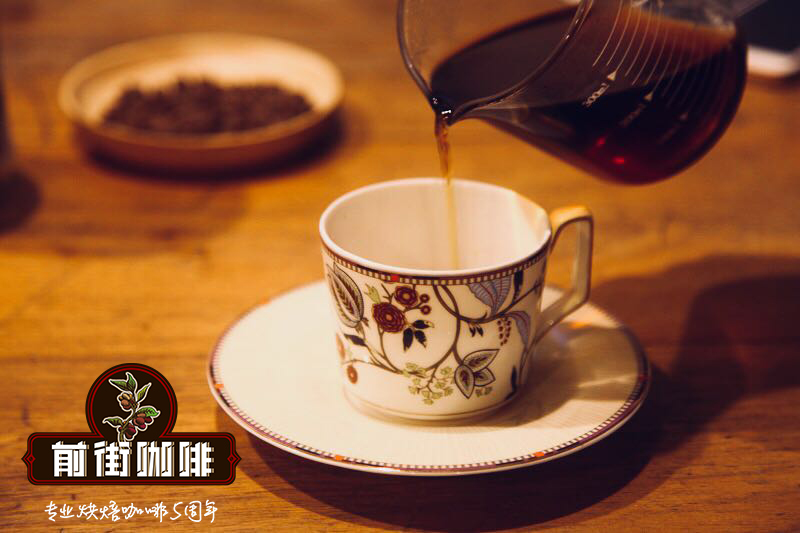What is the difference between Hawaiian coffee and Yunnan coffee? what are the kinds of Hawaiian coffee?

Professional coffee knowledge exchange more coffee bean information please follow the coffee workshop (Wechat official account cafe_style)
Hawaiian Kona coffee beans
There are about 500 coffee species in the world, but the three original species which are widely cultivated are Arabica, Robusta and Coffee Liberica. Among them, it has commercial value, and almost all of the coffee is Arabica. Including Rose Summer, Blue Mountain and Mocha and so on. The more common varieties of coffee in Hawaii are Catuai, Mokka, Typica and Caturra. The Hawaiian Typica introduced by ISLANDER is often described in the Hawaii State Cup as having chocolate aromas with slightly caramel, wood and nutty flavours. On the other hand, Caturra is famous for its fruity, berry flavor and silky taste. Yellow Caturra, specially introduced by ISLANDER, is famous for its melon-like sweetness and fragrance. In addition, this time we accidentally found that the Maragogype on the big island of Hawaii, commonly known as elephant beans, subverts our impression of elephant beans in Central and South America or South Asia. Thanks to volcanic soil, not only huge, chocolate and peanut aromas, caramel sweetness and its bean diameter show a surprising positive proportion, through shallow baking, the citrus flavor similar to large white pomelo is a new experience that coffee lovers should not miss.

Hawaiian Kona Coffee
Kona has a pleasant climate, charming sunset and beautiful beaches. It is also the most famous coffee producer in Hawaii. Most of the well-known Hawaiian coffee comes from Kona. This coffee has just been harvested, and the freshly baked coffee is particularly exciting. Full of peach and toffee, cream honey, nougat, cocoa flavor. Floral aroma, syrup-like taste. The grade of raw beans belongs to Extra Fancy Kona, which is the highest and the largest of all Konadou. Only about 10-20% of the total harvest can be attributed to Extra Fancy. It is really a rare coffee.
Although the flavor of a big apple is not necessarily better than that of a small apple, just as a big apple is not necessarily better than a small apple, the oversized Kona flavor is different. It is more palatable, gentle, fragrant and round, while the flavor of small particles Kona is more concentrated and strong.
This round and smooth Kona Bloom is very suitable for hand flushing.
The characteristics of Hawaiian coffee beans
In the coffee industry, island coffee beans are extremely rare, among which Jamaica Blue Mountain, Hawaiian Coffee Kona, and Kafu are outstanding. General island-type coffee beans are not hard enough, so they are less likely to go into shallow roasting, because shallow roasting tends to increase the temperature in a short period of time, which is easy to cause coffee beans to break. However, Hawaiian Kona and Cafu Coffee is blessed with both volcanic soil, high-altitude topography and special climate, and has been tested by shallow baking. ISLANDER is selected from the coffee beans of many award-winning estates on the Big Island of Hawaii, and works with excellent coffee roasters in Hawaii to adjust the taste according to the preferences of Taiwanese consumers.
Yunnan, as the largest coffee producing area in China, Starbucks, Nestl é and other large coffee enterprises have smelled its great potential.
History can be traced back to 1892. More than 100 years ago, French missionary Father Tian Deneng planted the first coffee tree in Zhukula Village, Binchuan County, Dali-which is generally traced back to the earliest record of coffee introduced into Yunnan. Coffee trees did not grow in the region for the next 100 years, and it was not until multinational corporations entered Yunnan in the late 1980s that the exotic was replanted and exported to the world.
After 1930, Mr. Liang Jinshan, a famous overseas Chinese leader, brought coffee to Pudong and Luoming for planting until the founding of the people's Republic of China. After 1952, under the guidance of experts in Baoshan, Lujiang and other places began to grow a large number of coffee, and the history of large-scale cultivation has been nearly 60 years.
By the end of 1997, the planting area of coffee in the province had reached 7800 hectares. At present, the planting area of the province accounts for 70% of the national area, and the output accounts for 83% of the whole country. Yunnan coffee has established the dominant position in China in terms of planting area and coffee bean production.
Appendix: the epoch of coffee knot in Yunnan
The first stage: in the 1880s, the Qing government was forced to sign a treaty with France to end the Sino-French war and opened Mengzi (Mengzi County, Honghe Prefecture) as a trade port. In 1889, Mengzi customs switch opened the prelude to the exchange between the southwest border and the outside world, and foreign businessmen gathered and foreign firms came one after another.
The second stage: in 1902, a French missionary named Tian Deneng brought coffee from Vietnam to grow coffee in a mountain village called Zhu Kula in Binchuan County, Dali, Yunnan Province. Today, the offspring of that batch of coffee are still alive, and the ancient coffee forest tells the story of a hundred years in the morning dew and sunset.
The third stage: in 1952, experts from Yunnan Academy of Agricultural Sciences distributed 80kg coffee seeds to farmers in Lujiangba, Baoshan, and then guided planting on a large scale a few years later, which led to the coffee trees swaying along the Yunnan-Burma Road. Coffee cultivation in Yunnan has developed rapidly due to the huge demand for supply from the Soviet Union.
The fourth stage: in 1988, Nestl é set up a joint venture in China and began to support the development of the local coffee industry in Yunnan by starting a coffee planting project. Yunnan coffee rose again. Since 1992, Nestl é has established the Coffee Agriculture Department to guide and study the improvement and cultivation of coffee in Yunnan, and to buy coffee at the price of the spot market in the United States. Up to now, not only coffee giants such as Nestl é, Maxwell, Kraft and Starbucks are engaged in coffee business in Yunnan, local coffee enterprises are also gradually growing.
Yunnan coffee grading system
Although coffee has been grown in Yunnan for many years, it is still not mature enough. Its grading system is also relatively messy.
1) International commonly used classification standards:
According to the size of coffee beans, the round hole grading screen is used for classification. The international custom of small grains of coffee has a size of 10-20, and the number used represents the sieve aperture as the fraction with that number as the numerator and 64 as the denominator, in inches. For example: 14 refers to the raw coffee beans that can pass through a sieve with an aperture of more than 64 inches by 14thumb, and 19 refers to those that can be screened by a sieve with an aperture of more than 64 inches by 19thumb. (1 inch ≈ 2.54cm)
2) the common grading standards of domestic coffee:
According to the sieve hole 6.5, 6.0, 5.5, 5.0 mm is divided into five levels.
First class: more than 6.5mm, full and complete particles.
Second class: 6.0-6.4 mm, plump, more uniform.
Grade 3: 5.3-5.9 mm, fuller and slightly less uniform.
Level 4: 5.0-5.4 mm, with incomplete rice, accounting for more than 75% of the total.
Level 5: less than 5.0mm, incomplete rice, complete accounted for more than 30%.
Important Notice :
前街咖啡 FrontStreet Coffee has moved to new addredd:
FrontStreet Coffee Address: 315,Donghua East Road,GuangZhou
Tel:020 38364473
- Prev

Introduction of Hawaiian Coffee beans description of Hawaiian Coffee Flavor
Professional coffee knowledge exchange more coffee bean information please follow the coffee workshop (Wechat official account cafe_style) Hawaii Kona coffee beans there are about 4500 coffee tree species in the world, but the three original species widely cultivated are Arabica, Robusta and Coffee Liberica. It has commercial value.
- Next

The flower-pulling champion, the hand-washing champion, the coffee shop? The 17-year-old barista has done it all!
Professional coffee knowledge exchange More coffee bean information Please pay attention to coffee workshop (Weixin Official Accounts cafe_style) Think back to what you did when you were 14 years old? Have you started fighting for your dreams? Or have you thought about what path you want to take in the future? What were you doing when you were 14? Take a look at this champion barista's progression! believe it or not
Related
- How did the Salvadoran coffee industry develop in Central America?
- What exactly does the golden cup extraction of coffee mean?
- The Origin of Coffee flower
- [2023 Starbucks World Earth Day] there are more meaningful things besides free Starbucks coffee!
- What kind of coffee is there in Spain? 9 Flavors of Spanish Coffee
- Aromatic African coffee| Kenya's coffee culture and historical production area
- Liberica Coffee Bean knowledge: the characteristics of Liberian Coffee beans of the three original species of Coffee beans
- The origin and formula of Spanish latte introduces the taste characteristics of Bombon coffee in Valencia, Spain.
- How to adjust the solution of over-extracted coffee
- What is the tasting period of coffee beans? What is the period of coffee and beans? How should coffee wake up and raise beans?

